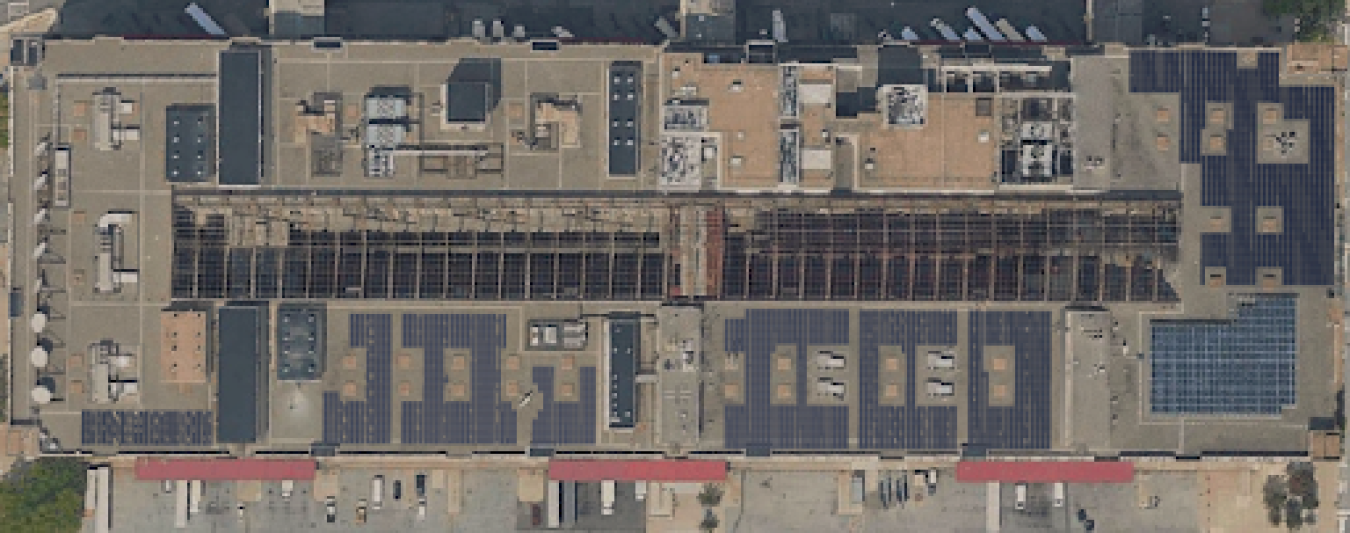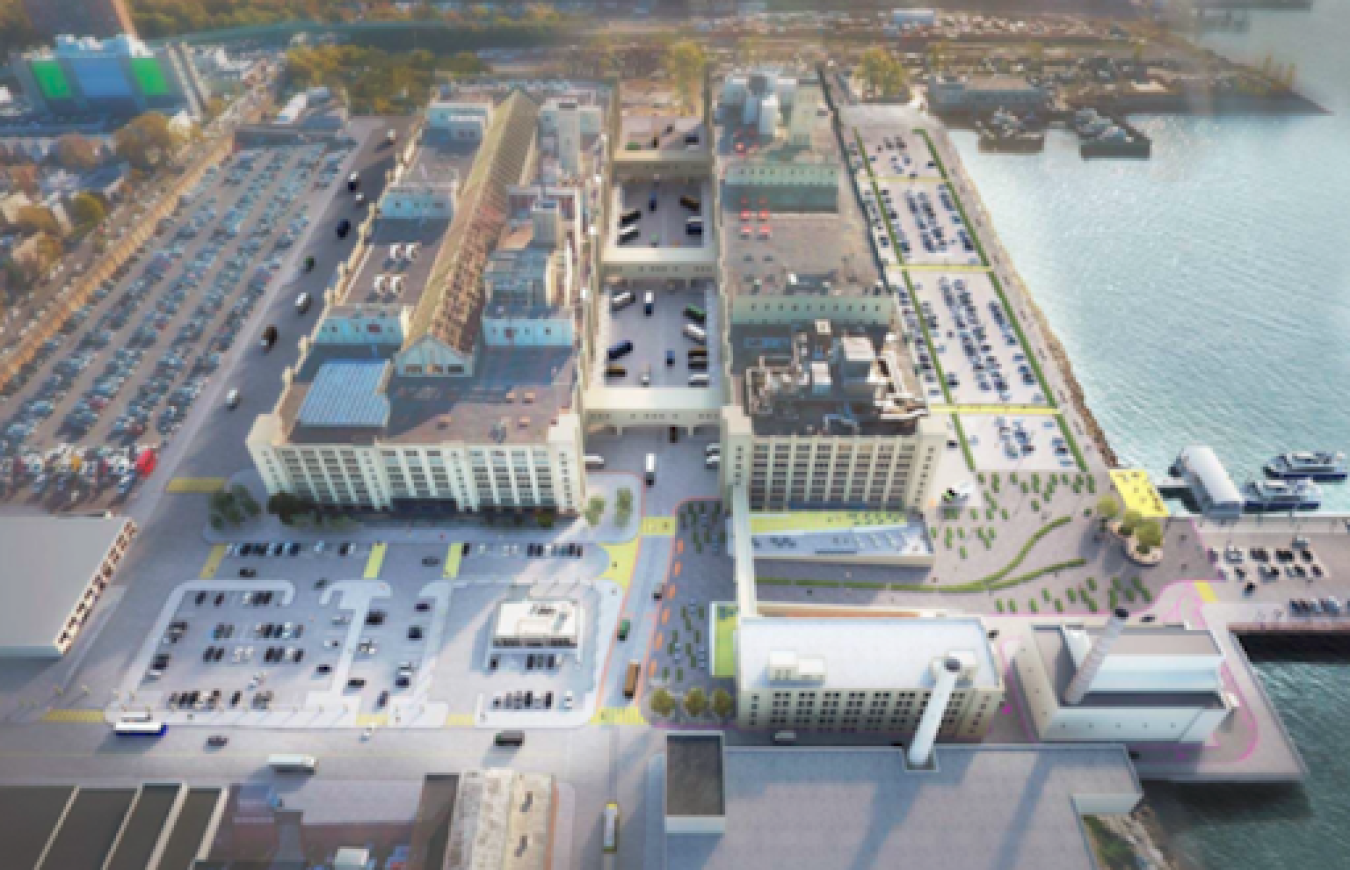Just because up to 50% of U.S. homes and businesses lack a rooftop suitable for solar panels doesn’t mean they can’t have access to clean energy. More states are passing policies that enable residents to tap into community solar, which allows customers to benefit from a shared solar installation. Want community solar in your neighborhood? Here’s how two New York projects are making it happen.
Sunset Park
Sunset Park, Brooklyn, is a predominantly working-class and immigrant community with more than 130,000 residents. It’s also home to New York City’s largest industrial waterfront with three peaker plants, three waste transfer stations, and a highway that carries 200,000 cars and 25,000 diesel trucks per day, all of which expose Sunset Park’s most vulnerable residents to pollution that contributes to health inequities.


Artist renderings of Sunset Park community solar project, courtesy of UPROSE.
Now, Sunset Park will also be home to New York City’s first cooperatively owned, 685-kilowatt community solar project. The new array will benefit about 200 subscribers—homes and businesses that wouldn’t otherwise be able to access solar energy—with 15% savings on their monthly energy bills and workforce development training.
“This project is really the culmination of almost 10 years’ worth of advocacy and organizing, particularly after Superstorm Sandy in 2012,” said Summer Sandoval, energy democracy coordinator at UPROSE, a women-of-color-led grassroots organization and a partner selected to develop and operate the project. After Sandy, UPROSE held climate resiliency planning workshops in the community to identify issues and solutions to focus on. One was local energy production.
Together, UPROSE, partners, and the community worked to develop a “scalable, replicable model” for a local clean energy supply that brings local economic development and builds community wealth. Beyond signing up residents as subscribers, UPROSE engaged and provided the community with the in-person workshops, training, multilingual fact sheets, and other information they needed to meaningfully participate in their own clean energy systems.
Community Power
Community Power is a 1.2-megawatt community solar project in partial operation for 40 buildings in three New York public housing developments with low- and middle-income residents. The project provides discounted solar credits for about 500 low-income households while creating long-term, good-paying jobs for public housing residents. Participants save an average of $10 on monthly energy expenses and automatically become members of a solar co-op, free of charge. About 25 residents were trained in solar installation, and most were hired to work on the project.
Local environmental nonprofit Solar One is providing technical assistance through its Here Comes Solar program. Solar One is working with community organizations like WE ACT for Environmental Justice, digital outlets, and partners like local utility Con Edison to inform residents about the project and help them sign up to get solar energy.
Lessons Learned
Both teams worked hard to get their community solar projects off the ground. Now they have some tips:
Keep it simple. “Just making it as easy as possible to understand and to sign up made a big difference,” said Juan Parra, Solar One’s community solar program manager. His team sought to pre-qualify residents and devised a relatively fast sign-up process by working with affordable housing providers and the utility to focus outreach on individuals who already met the income requirements.
And while subscribers save money, they don’t like receiving two energy bills a month—one from the utility with their solar credits applied, one for their Community Power solar subscription, equal to the solar credits at a discount. “Nobody wants to pay two bills,” Parra said. New York utilities are still working to implement consolidated billing. Try for one, though it might not be available in your state or jurisdiction.
Make information accessible. During the pandemic, the Sunset Park project implemented regular online workshops to communicate the financial, community, and sustainability benefits to renters and small-business owners. The team also created materials in English, Chinese, and Spanish to ensure greater accessibility, and leveraged visual tools like infographics and memes to illustrate the benefits of participating.
Emphasize benefits beyond cost-savings. “People aren’t driven entirely by money,” Parra said. His team explained all the program’s benefits to community members, including sustainability, community investment, and job training.
To launch a community solar project in your area, check out these community solar resources, and join the National Community Solar Partnership.